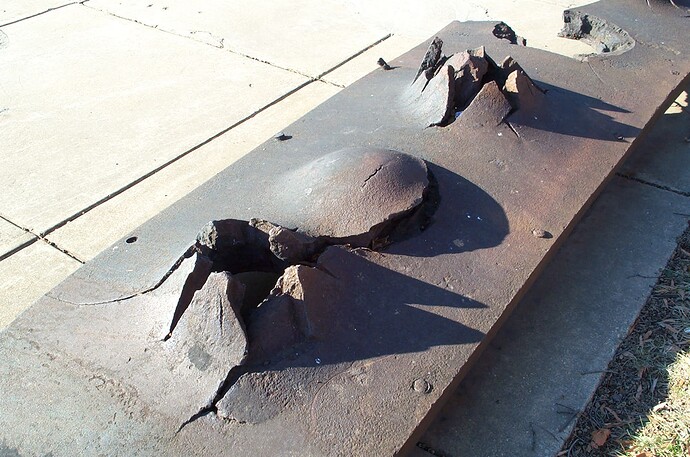I’m no metallurgist, but I agree with you, my friend, that hardness and resistance are very different things.
Hardness, in it’s nature, eventually risks to become simple brittleness.
Resistance (by contrasting comparison) may lead to an eventual defeat of the plate, but that defeat will only be achieved at the considerable cost of ensuring a series of consistent/repeated pressure/hits on the same given weak spot, whereas:
Brittleness/hardness means it only takes one or two massive applications of pressure on the same weak spot to produce a defeat of the plate.
EDIT:
What the British seem to have fortuitously stumbled upon with the Churchill tanks is the beneficial results of layering steel plate.
The various turrets of the various marks of Churchill attest to that.
From what I can gather, the British initially considered the benefits of layering to be a side-effect at best, and only later came to realise they had stumbled upon a truely beneficial thing.
In post-war years this saw its’ most full expression in Chobham armour, to which the Stillbrew Armour as applied to Chieftan tanks contributed very heavily. As Chieftan was an outgrowth/development of Centurion, the link back to WW2 and the Churchill turrets is easily seen.
Kind and Respectful Regards Panzerknacker my friend, Uyraell.

 OK, I --managed-- to comprehend the above, but oyyy gevayyy: Mann habst nich der Doktorat ins Metallische Physik.
OK, I --managed-- to comprehend the above, but oyyy gevayyy: Mann habst nich der Doktorat ins Metallische Physik. 
